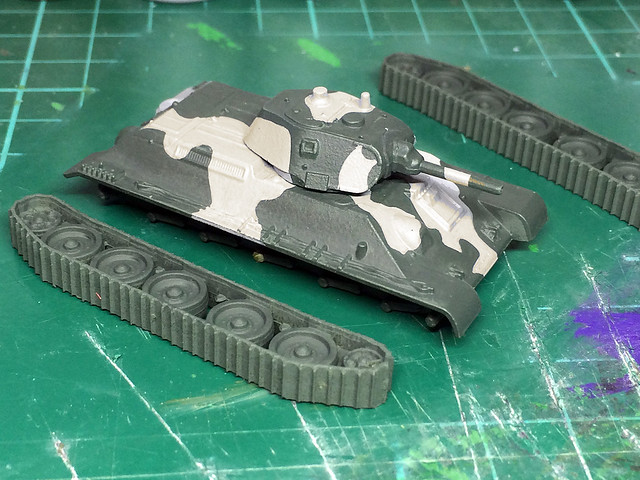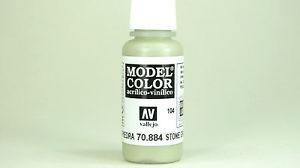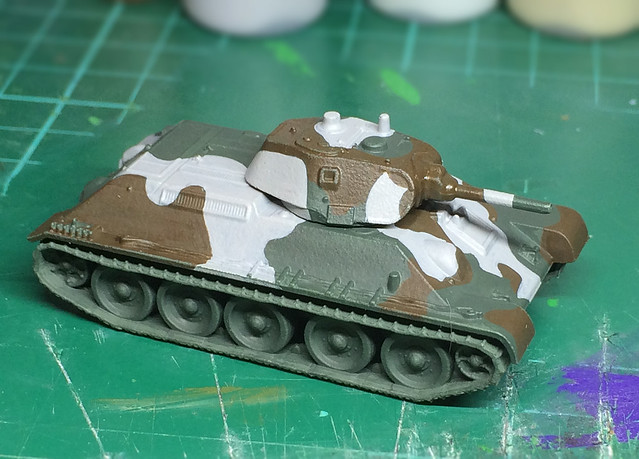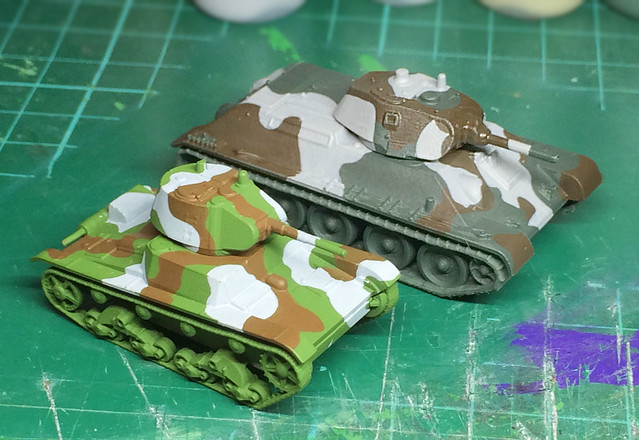[Note: You might ask why I didn't just base my colour scheme on museum exhibits in the fist place - after all if they are in a museum they are bound to be authentic aren't they? Well, that's a can of worms I don't want to open - suffice to say very little original WW2 vintage Finnish paint schemes still exist, and where they do they are often faded and discoloured. So, in short, if you see a nice Finnish camo scheme in a museum the likelihood is that it is a modern repaint. So determining which of the schemes out there are the authentic ones can be a bit tricky.]
Anyway, 'nuff said - here is my second crack at 'a' Finnish 3-colour camo...(This time using a Zvezda 1/100 T-34 Model 1940 as the test-bed...)
1. Base colours.
The basic colour I'm starting with is the green, and in this case - despite the official description of the Finn's green element being termed 'Moss Green' - research leads me to believe that the actual green of a 1941-45 3-colour Finnish camouflage pattern was a bluish-green.
I began with a primer coat of Humbrol's No. 30 Dark Green Matt acrylic spray, which is a slightly lighter bluish tinged green than my main coat will be. The main coat was then applied and consisted of a mix of Vallejos' [70920] German Uniform and a dash of [70979] German Camo Dark Green.
2. Grey(ish)
Next, I'm trying out a warm grey - which has a hint of oatmeal colour to it - which I have mixed using some Vallejo Model Color [70990] Light Grey and a dash of Vallejo [70884] Stone Grey...
Amusingly, this looks just grey in my photo which just goes to illustrate how tricky colour matching can be when using photography, Changes in light and exposure can 'warm' or 'cool' colours. You'll just have to take my word for it that there is a very subtle hint of Stone Grey (a soft beige) in there.
I am not going as far as some modellers go through and making this part of the 3-colour camo an obvious sandy-beige. Even model manufacturers - like Tamiya - tend to get very 'artistic' when it comes to interpreting this colour (they have gone full-blown sand).
3. 'Sand Brown'
My preference (note wording) for the type of brown which will represent the very loaded description of 'Sand Brown' is more of a mid-chocolate-brown. In my case, I have plumped for Vallejo's Model Color [70941] Burnt Umber...
The only issue I have with this is the shape of this pattern rather than the colours themselves. But apparently this is an authentic pattern so my personal aesthetics have little relevance. The brown turned out looking a little glossy for some reason, but I will be giving it a spray of matt varnish later so that should tone this down.
Well, that is the basic painting tests done, I'll need a little time to reflect on which I prefer. In the meantime, I will finish off the two test models with some weathering as they are quite nice in their own right.





No comments:
Post a Comment